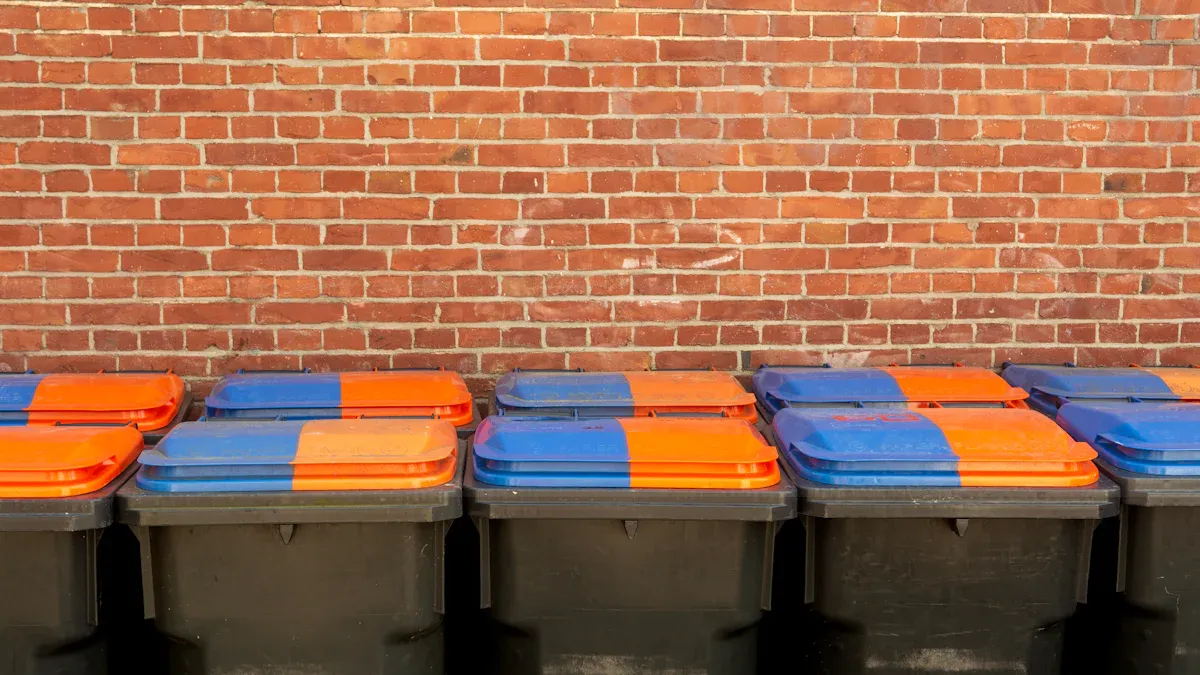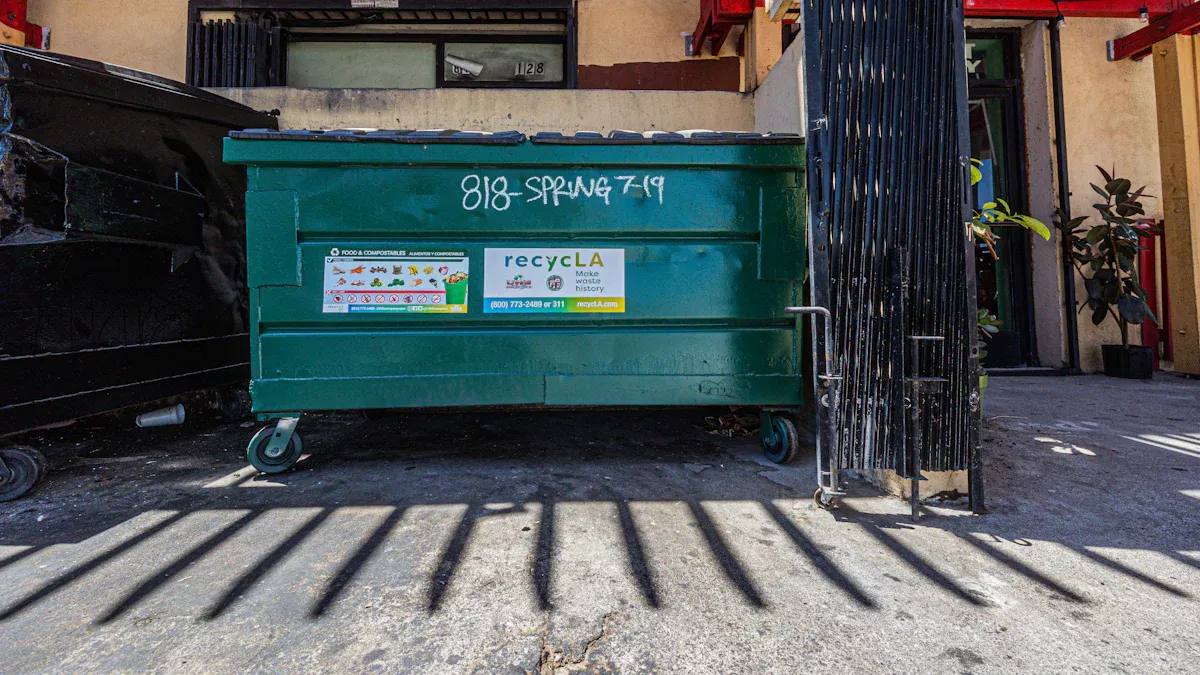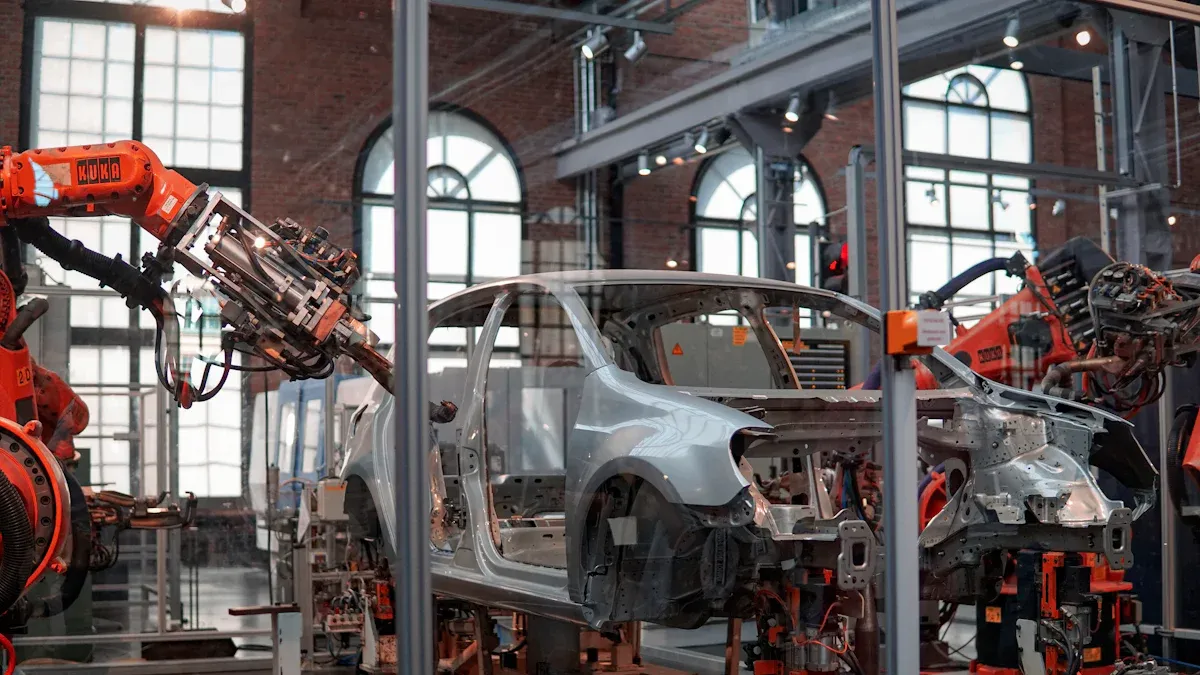What Does TIMWOOD Stand For in Lean Manufacturing

TIMWOOD refers to the seven types of waste in lean manufacturing: Transportation, Inventory, Motion, Waiting, Overproduction, Overprocessing, and Defects. The TIMWOODS acronym extends this by adding Skills as an eighth waste. Understanding these different wastes is essential for manufacturers employing TIMWOOD lean manufacturing principles, as it enables them to utilise lean tools effectively. This approach not only helps save money but also improves operational efficiency. Lean manufacturing relies on TIMWOOD to identify key wastes and enhance processes.
TIMWOOD Lean Manufacturing

What Is TIMWOOD?
TIMWOOD started with the Toyota Production System. Taiichi Ohno, who was Toyota’s Chief Engineer, made this idea. He wanted to get rid of waste in lean manufacturing. TIMWOOD stands for seven main wastes: Transportation, Inventory, Motion, Waiting, Overproduction, Overprocessing, and Defects. These wastes are things that do not make the product better. Later, Skills was added as the eighth waste, making TIMWOODS. This new waste shows when companies do not use workers’ talents well. If skills are ignored, companies lose chances to get better and create new ideas.
Description | Suggested Fixes | |
|---|---|---|
Transport | Unnecessary movement of materials | Optimise routes, consolidate shipments |
Inventory | Excess or obsolete stock | Use Just-in-Time systems |
Motion | Non-value-added human movement | Redesign layouts with 5S |
Waiting | Idle time between processes | Balance workflows |
Overprocessing | Redundant steps or over-engineering | Simplify with Value Stream Mapping |
Overproduction | Making more than needed | Forecast better, make to order |
Defects | Errors causing rework or scrap | Use standard work, error-proofing |
Skills | Untapped human potential | Rotate jobs, train staff, encourage innovation |
Why TIMWOOD Matters
TIMWOOD helps companies find wasteful steps that do not add value. The TIMWOODS framework lets teams see waste in both processes and people. Lean tools like 5S, value stream mapping, and Kanban help remove these wastes. When companies cut waste, they make lean manufacturing simpler and save money. For example, a car maker found too much stock and extra movement. By using lean ideas, they saved £8 million every year. Lean also deals with mura, which means unevenness, and muri, which means too much work. These often cause waste. The 8 wastes of lean show that getting better means always looking for and removing waste. This way, companies get better quality, faster delivery, and more profit.
Eight Wastes of Lean

The 8 wastes of lean are the base of TIMWOOD and TIMWOODS. Finding and removing these wastes is very important for any group that wants to work better, spend less, and always get better. The next parts talk about each of the 8 wastes of lean. They give easy examples and clear meanings.
Transportation
Transportation waste means moving things or information when it is not needed. This does not help the product. It often happens because of a bad layout or poor planning. For example, using forklifts to move products that do not need to be moved, sending unsold goods back to warehouses, or moving equipment between places because plans changed are all transportation waste. These actions make handling cost more, can break things, slow down work, and wear out machines. Bad workspace design often causes these problems. This makes work slower and costs more.
Tip: Groups can cut transportation waste by making layouts better, sending more things at once, and getting supplies from closer places.
Inventory
Inventory waste happens when a company keeps too much stock. Having too much stock uses up money, takes up space, and can mean things go bad or are not needed. It also costs more to store and makes planning harder. For example, if a factory has too much raw material or finished goods, it can be hard to fill orders quickly and keep track of stock. Too much inventory means paying more for storage, insurance, and losing value, which makes it harder to use money for other things. Companies like Toyota use Just-in-Time to match making things with what people want. This cuts inventory waste and helps work better.
Too much inventory makes money tight and costs more to keep.
It can mean products go out of date or cause other problems.
Using demand-based ordering and Kanban helps keep inventory low.
Some real examples are Canyon Creek Cabinet Company, which saved over £1 million a year by losing less material and having fewer mistakes, and Custom Print, which cut chemical stock by 70% and saved on power and ink.
Motion
Motion waste is when people or machines move more than they need to. This can be walking, reaching, bending, or looking for tools. These moves do not help the product and can make people tired or hurt. For example, if workers walk far to get parts or tools because their work area is not set up well, this is motion waste. Spaghetti diagrams show these extra moves and help make work safer and faster. Cutting motion waste helps people work better and feel happier.
Examples of motion waste:
Bending to pick up things
Moving machines when not needed
Making work areas better and safer helps lower motion waste.
Waiting
Waiting waste is when people or machines are not working because they are waiting for the next step. This can happen if work is not balanced, machines break, or materials are late. For example, if one job takes longer, others must wait, wasting time. Waiting waste makes work take longer, costs more for workers, and can spoil materials. Fixing waiting by planning better and balancing work helps things move faster and smoother.
Note: Studies show that cutting waiting and inventory helps companies earn more, have better profits, and use money better with lean methods.
Overproduction
Overproduction is when a company makes more than people want to buy. This waste means there are extra goods that do not sell, which uses up money and needs more space. Overproduction often happens because of bad guessing or wanting machines to always run. This lowers profits, raises storage costs, and can hurt the environment by wasting things. For example, car makers sometimes have too many cars when people are not buying. Overproduction can also cause big losses, with car factories losing about £2 million every hour they stop.
Overproduction causes:
Extra goods that do not sell and waste materials
More costs for storage and moving things
Bad effects on the environment and people
Using better guessing and Just-in-Time helps match making things with what people really want.
Overprocessing
Overprocessing waste is doing more work or using better materials than needed. This means extra steps that do not help the customer, like polishing too much or painting parts no one sees. Overprocessing often happens because rules are not clear or work is not standard. It costs more for work and materials, slows things down, and can upset workers. For example, using too much packaging or checking things too many times adds cost but does not make the product better.
Aspect | Details |
|---|---|
Definition | Overprocessing means adding steps or features that do not help the customer. |
Cost Implications | More time, more materials, and more machine use make things cost more. |
Operational Impact | Makes work slower by taking time away from important jobs. |
Causes | Not clear rules, not standard work, or designs that are too strict. |
Examples | Painting hidden parts, polishing too much, or making things too exact. |
Financial Impact | Every penny saved by stopping overprocessing goes straight to profit. |
Solutions | Use clear work rules, check designs, and make steps simpler. |
Looking at how things are made often shows that 40-60% of steps do not help the product. Taking away these steps is a big part of cutting waste.
Defects
Defects waste is when products or work do not meet the right standards. Defects mean things must be fixed or thrown away, wasting time, materials, and money. Common defects are parts that do not fit, machines that break, or surfaces that are dirty or scratched. Causes can be mistakes, bad machines, or not enough training. Defects cost more and can make customers lose trust in the company.
Defect Type | Examples | Causes | Contribution to Waste and Impact |
|---|---|---|---|
Cracks in metals, bent plastics | Bad materials, poor storage | Scrap, fixing, lower product quality | |
Manufacturing Process Defects | Parts that do not fit, bad welds | Machine problems, mistakes, missed steps | Broken products, fixing, scrap, delays |
Design Defects | Electronics that get too hot, unbalanced parts | Bad design checks, not thinking about making | Product failures, returns, warranty claims |
Cosmetic Defects | Scratches, paint problems | Handling mistakes, bad packaging | Unhappy customers, returns, fixing |
Functional Defects | Electronics that do not turn on, broken parts | Mistakes in making, bad testing | Returns, warranty claims, safety problems |
The later a defect is found, the more it costs. For example, finding a defect in raw materials may cost £1, but if a customer finds it, it can cost £1,000 or more. Stopping defects early saves a lot of money.
Skills
Skills waste is the eighth waste in TIMWOODS. It means not using workers’ talents, knowledge, or ideas. When companies do not use workers’ skills, they miss chances to get better and try new things. This waste makes people feel bored, lowers team spirit, and means less work gets done. For example, giving skilled workers boring jobs or not training them stops them from doing their best. Good leaders, training, and letting workers help solve problems are important to stop skills waste.
Note: Skills waste is often missed but really matters for lean success. Helping workers use their skills and matching jobs to their strengths makes people happier and helps the company keep getting better.
The main difference between TIMWOOD and TIMWOODS is that skills is the eighth waste. TIMWOOD looks at the first seven wastes, but TIMWOODS says that not using talent is just as bad as other wastes. Fixing all 8 wastes, including skills, helps groups get the most value and the least waste.
Benefits in Lean Manufacturing
Efficiency Gains
Lean manufacturing helps companies work faster and better. Teams look for waste and remove it. This helps them use time and things more wisely. Studies say lean companies can get up to 50% more work done. When teams cut waste, they skip steps that do not help. This makes work quicker and smoother. For example, less walking or waiting means products move faster. Lean tools like 5S and value stream mapping help teams find waste and fix it for good. This means more products are made, and quality gets better.
Cost Savings
Lean manufacturing saves real money. Companies that fight waste often see profits go up by 20% to 30%. Less waste means less money spent on extra stuff, storage, and fixing errors. For example, if a company cuts inventory waste, it pays less to store things it does not need. Lean also saves money by stopping defects and overproduction. These savings let companies buy better tools, train staff, or make new things. Over time, lean thinking makes companies stronger and helps them compete.
Employee Engagement
Lean manufacturing is not just about saving money and time. It also helps people feel part of the team. When leaders fix waste, especially unused skills, workers get to share ideas and solve problems. This builds teamwork and respect. Teams who help cut waste feel proud and want to do well. For example, Nucor Corporation saw happier workers and better results after using lean. Lean methods support training, learning new skills, and trying different jobs, which keeps people interested. A safer, tidier workplace also means fewer injuries and less stress.
Tip: Ask workers where they see waste. Their ideas can make the biggest changes.
Benefit Category | Description of Impact |
|---|---|
Waste Reduction | Less scrap and rework, fewer mistakes |
Operational Efficiency | Faster production, smoother processes |
Employee Engagement | Higher morale, more involvement |
Cost Savings | Lower costs, better use of resources |
TIMWOOD and TIMWOODS help groups find and get rid of waste. This makes work better and saves money.
Many top companies use lean checks, process maps, and staff lessons to get better.
When teams look at their own work with the TIMWOOD steps, they can begin to work smarter and come up with new ideas.
FAQ
What is the main goal of TIMWOOD in lean manufacturing?
The main goal of TIMWOOD is to help companies find and remove waste. This makes work faster, cheaper, and better for everyone.
How does TIMWOODS differ from TIMWOOD?
TIMWOODS adds Skills as the eighth waste. This means companies also focus on using every worker’s talent and ideas.
Can small businesses use TIMWOOD principles?
Yes, small businesses can use TIMWOOD. They can start by looking for simple wastes, like extra stock or waiting, and then make small changes.
See Also
A Clear Introduction To Total Productive Maintenance Concepts
Understanding PPAP As Essential For Manufacturing Quality Assurance
Improving Engineering And Manufacturing Efficiency With Quick Response Methods
A Guide To PPM Within IATF 16949 Certification Standards
An Overview Of Jigs And Fixtures Used In Manufacturing
About Hunan Puka
Established in 2016 and based in Hunan, China, with a liaison point in Berlin, we are a Tier 2 supplier for the automobile industry. We specialize in the production of customized aluminum die-casting parts designed for machines with a closing force ranging from 280 to 1250 tons, with subsequent manufacturing process CNC machining and surface treatment. Our commitment to quality is reflected in our accredited quality management system, certified by ISO9001:2015 and IATF16949:2016 standards.


